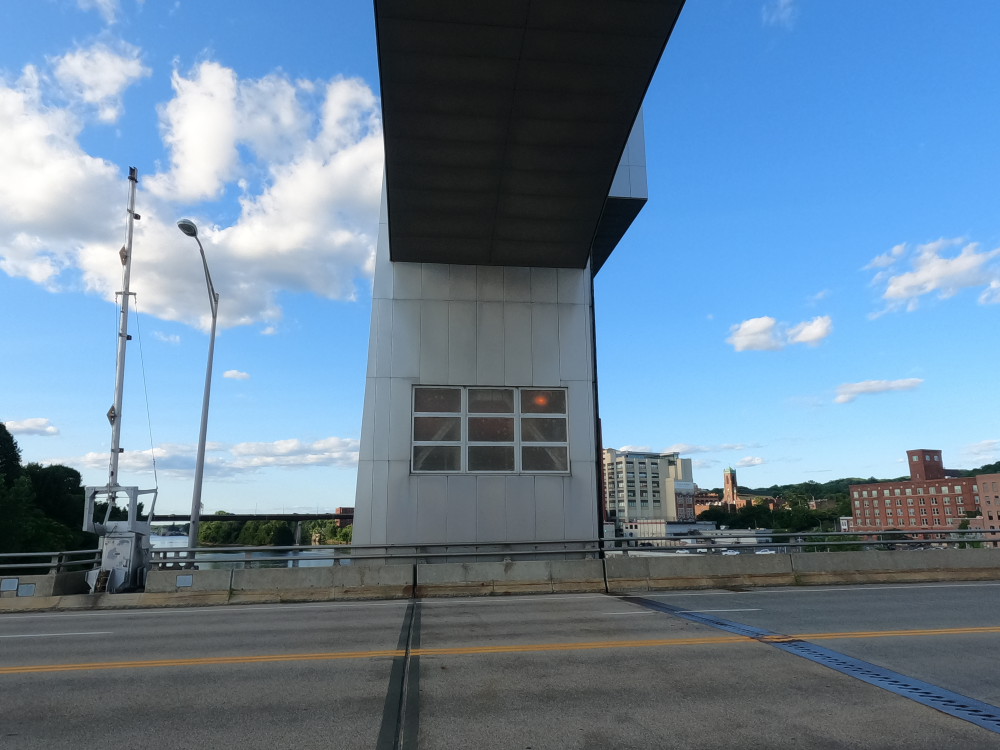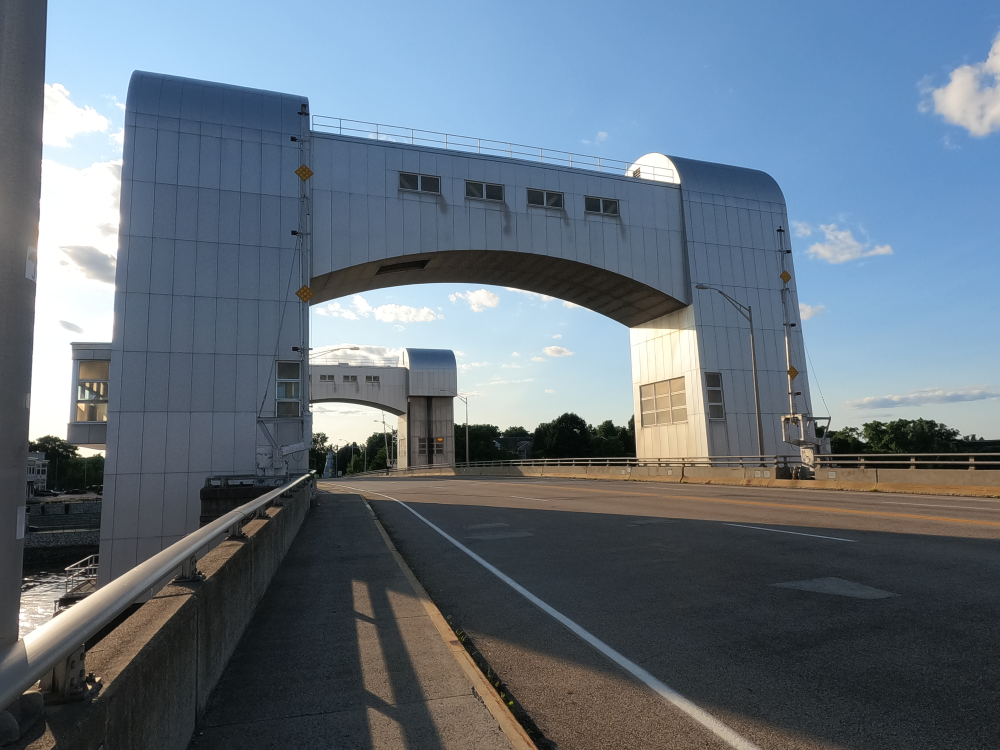
Green Island Bridge
NBI Information
Location
State: New York
County: Albany County
Feature Carried: NY-915
Feature Crossed: Hudson River
Latitude, Longitude: 42.7351,-73.6889
Toll: On free road
Maintenance Responsibility: State Highway Agency
Structure Open, Posted, or Closed to Traffic: Open, no restriction
History
Year Built: 1982
Historical Significance: Bridge is not eligible for the National Register of Historic Places.
Year Reconstructed: None
Picture Date: July 4, 2025
Geometry
Lanes on Structure: 4
Lanes under Structure: 2
Skew: 0 degrees
Number of Main Spans:
Main Structure Type: Movable - Lift
Main Structure Material: Steel
Number of Approach Spans: 4
Approach Structure Type: Stringer/Multi-beam or Girder
Approach Structure Material: Steel
Condition
Inspection Date: August 2022
Deck Condition: Good
Superstructure Condition: Good
Substructure Condition: Satisfactory
Channel Condition: Satisfactory
Culvert: Not Applicable
NBI Year: 2024
Bridge Information
The Green Island Bridge is the only movable bridge on the Hudson River. It opened on September 12, 1981, and is a vertical lift bridge.
The first bridge at this location was built to provide railroad service to the city of Troy. The bridge was considered a national wonder when it was constructed in 1832. It was a seven span wooden covered bridge with a swing span right on the Troy shore. The pivot point was on the shore, and the bridge only cleared about 30 feet when it was opened. Initially, the railroad cars were uncoupled from the steam locomotives in Green Island and were pulled across the bridge by horses. In 1851 a new depot was constructed in Troy, and locomotives were used the entire way, including across the bridge. In 1862, a spark from one of the engines on the bridge, along with a strong westerly wind, set the bridge and the entire downtown on fire. Over 500 buildings covering 75 acres burned. The bridge was quickly replaced with a new wooden bridge.
By the 1880’s, steel was readily available, and the Green Island bridge was replaced with a steel Warren truss bridge in 1884. This bridge was really two parallel bridges with the northern spans being used for rail and the southern spans being used as a toll bridge for cars, trolleys, and pedestrians. It continued to operate as a swing bridge, with the moveable span on the Troy end of the bridge. The swing span still only cleared about 30 feet, which quickly became insufficient. In 1918, the New York State Barge Canal System was completed which widened and deepened the existing Erie and Champlain Canals. The mules and horses pulling small barges had been replaced with motorized tugboats, which required wider clearance. In the 1920’s, the second span was converted to a lift span and the initial swing span was converted to a fixed girder span.
Railroad service to Troy ended in 1963, and the rails were removed in 1964. At this point, the bridge was sold to the state. On March 15th, the bridge failed during a spring flood due to heavy scour on the piers. The heavy counterweight from the lift span caused the bridge to twist, and the western lift tower and spans fell into the river. Although the bridge collapsed during rush hour, there were no casualties. Fortunately, a few people heard loud noises coming from the bridge, and realized it was collapsing. The spring into action and quickly stopped traffic from going on the bridge.
Construction on a new bridge began in 1978 and was completed in 1981. The bridge still operates as a lift span, and raises to a height of 60 feet, although it is only raised occasionally. The metal frames across the roadway house the lift mechanisms and counterweights.
References












